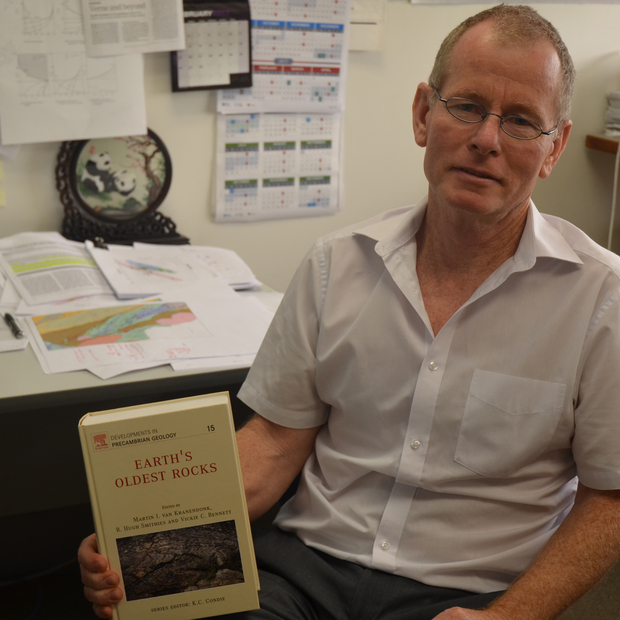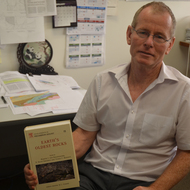New modelling significantly changes views on how the Earth’s continental crust formed
| Date: | Wednesday, 01 March 2017 |
|---|
Work by past and present Geological Survey of Western Australia (GSWA) geoscientists has been acknowledged in the recent publication of a paper in the prestigious international science journal Nature.

The paper, Earth's first stable continents did not form by subduction, changes our understanding of the evolution of the early earth and includes GSWA geochemist Dr Hugh Smithies and former GSWA geochronologist Associate Professor Chris Kirkland, now in the Department of Applied Geology at Curtin University, as co-authors.
Dr Smithies said that GSWA’s contribution to the paper had its genesis in a mapping program on rocks in the northern Pilbara that he and another former GSWA geologist, Professor Martin Van Kranendonk, now at the University of New South Wales, were part of during the 1990s and early 2000s.
Dr Smithies explained that 70 per cent of Earth’s crust that constitutes our present continents had formed within roughly the first 1.9 billion years of Earth’s 4.56-billion-year history, but science is still unclear on the processes that formed it.
“The popular school of thought is that it formed then in much the same that it does now – at plate boundaries where one plate is pushed beneath another, or subducted, to produce new and more stable crust that can endure to the present day,” he said.
“However, there is a growing realisation that this uniformitarian model might not reflect the dominant process on the early earth and that an intracrustal model may be the answer.
“This model significantly changes views on how the Earth’s continental crust formed and has implications for the planet’s early geochemical cycles and ultimately the evolution of the atmosphere and life.
“More importantly for Western Australia, the processes through which crust forms and is modified directly determine economic mineral endowment.”
Dr Smithies said that understanding such processes enabled geologists to be more informed about where and how to look for mineral deposits.
“This new model takes into account the secular cooling of the earth and suggests that before 2.7 billion years, the Earth was simply too hot for subduction processes to operate efficiently,” he said
“So, much of the continental material created by that time had to form by another process, basically by the melting in-situ of basalt derived from Earth’s mantle, to produce successively more buoyant and stable crust.”
Dr Smithies said that lead author Dr Tim Johnson from Curtin University saw an opportunity to apply a new thermodynamic modelling technique to basalts in the eastern Pilbara described by himself and Professor Van Kranendonk in 2009.
Dr Smithies and Professor Van Kranendonk had suggested them as having compositions from which an intracrustal non-subduction melting model for Earth’s early crust could produce granites with the observed compositions.
“The new modelling ‘theoretically melts’ basaltic rock and estimates the pressure and temperatures required for melting, and the composition of the magmas that formed, based on the types of new minerals predicted to be left over from the melting process,” Dr Smithies said.
“The results of this work showed that Pilbara basalts could indeed melt to give granitic magmas of the required composition for early continental crust and that this melting occurred at lower pressures than previously expected,” he said.
“In fact, it was a lot easier than conventional wisdom envisaged and it required a multi-stage process that was consistent with Dr Johnson’s version of intracrustal melting models.”
Dr Smithies said that the modelling was an endorsement of the large and influential body of new ideas about early earth evolution that came out of GSWA’s work in the Pilbara through the 1990s and early 2000s, mainly by Professor Van Kranendonk, himself and Dr Arthur Hickman, who was GSWA’s Pilbara Project Manager.

